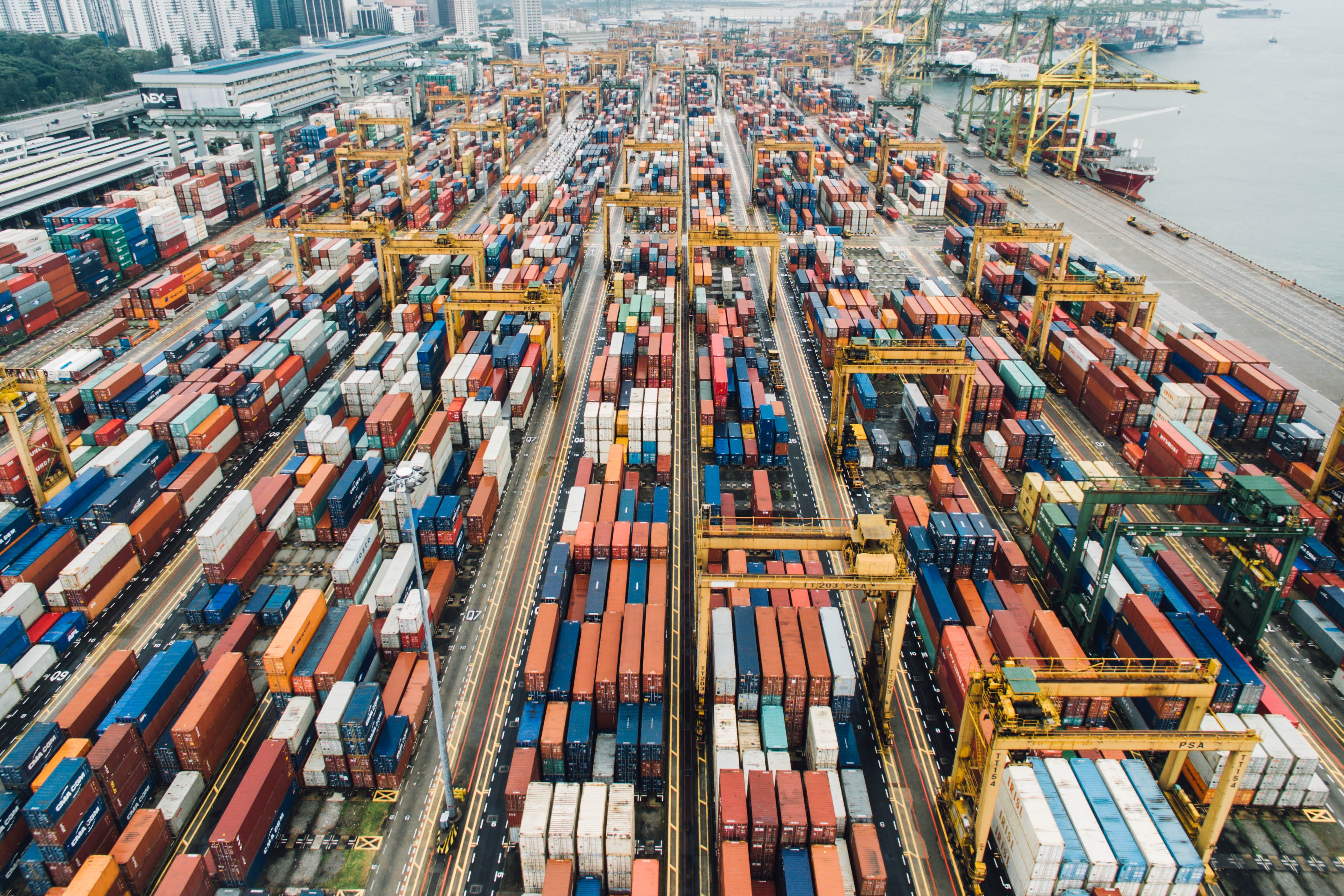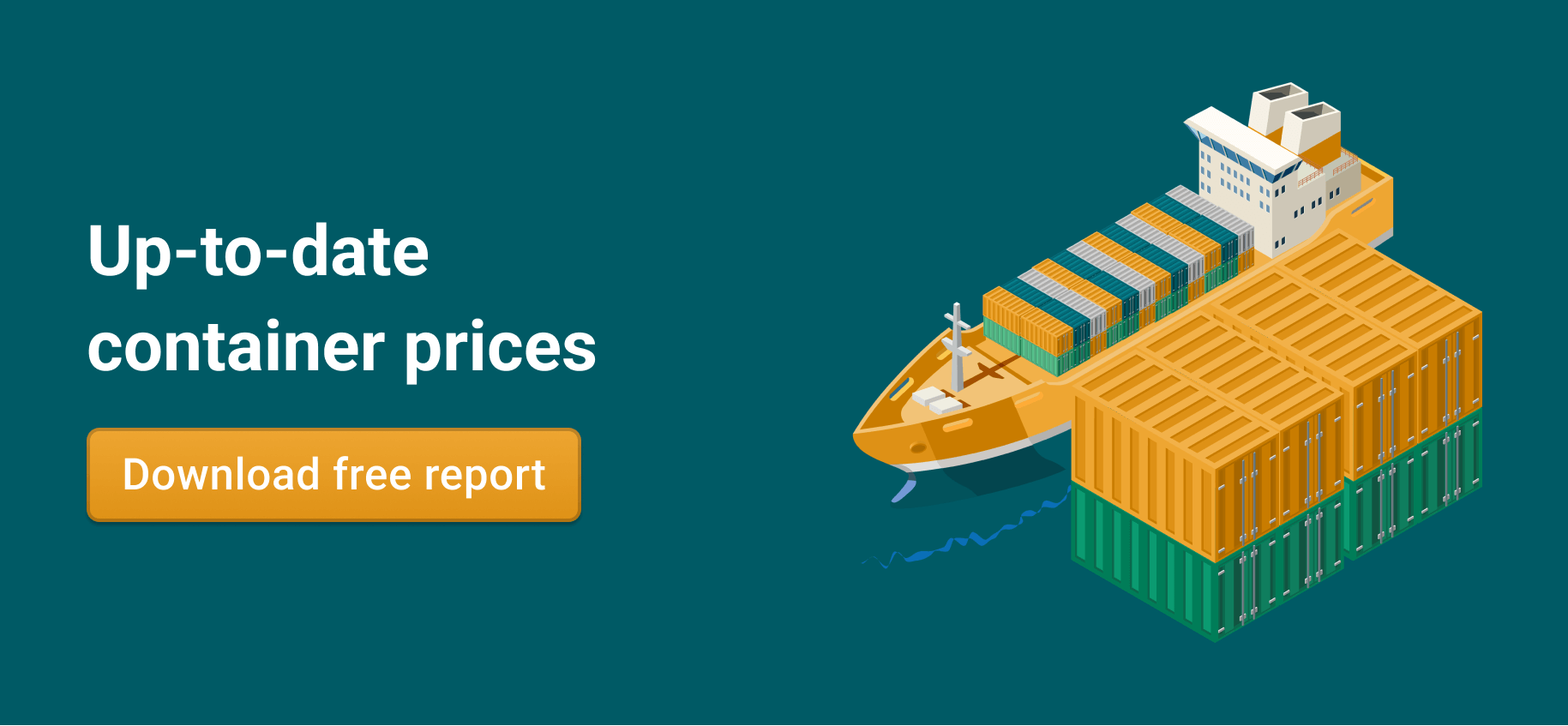Are you interested in how container terminals work, as well as the differences between a terminal and a port? This is your chance to find out everything you need to know. Plus, learn how to save on port charges and fees with SOC containers.
Container terminals, along with container ports as a whole, are a crucial part of the supply chain network. They play a vital role in a country’s growth and development, and contribute to economic, political and trade relations around the world.
In recent years, the importance of ports and terminals has come into focus, with private ownership steadily on the rise. And for good reason. Let’s learn more about what makes these facilities so important and necessary below.
What is a container terminal?
A container terminal’s main function is to allow for the transfer of shipping containers and cargo between ships and other modes of transport, such as trucks and trains. Terminals also act as a checkpoint where ships are inspected, loaded and unloaded.
You may have heard the terms ‘container terminal’ and ‘container port’ used interchangeably. However, terminals and ports are not the same. Let’s take at the differences now.
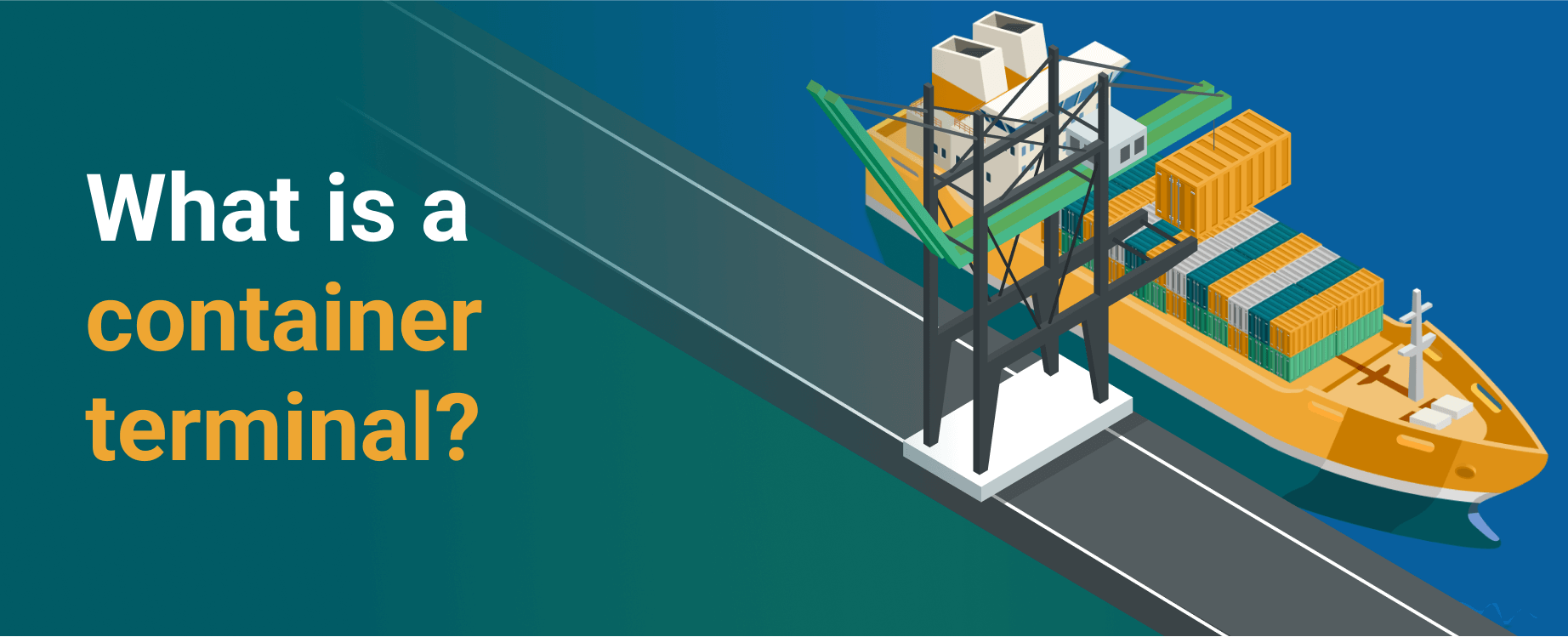
Key differences between container terminal & container port
A container port is a station used for commercial and trade activities such as the loading and unloading of cargo. Ports are usually located within harbors, and are used for commercial purposes. Besides the unloading of goods, ports are also utilized to offload passengers, as well as for ship maintenance.
A terminal, on the other hand, is a designated area within a port. In a single port, you’ll find many different container terminals, each dedicated to handling specific types of goods and materials. For example, you’ll get separate terminals for gas, oil, building materials and vehicles. Activities at terminals include the temporary storage of containers, maintenance and repair, and sometimes consolidation and deconsolidation of cargo.
Now let’s check out the role of container terminals in the overall shipping process.
Role of container terminals in the shipping process
As mentioned above, the main role of a terminal is to connect maritime transport (i.e. ships) to other modes of transport such as trucks, trains and barges.
Terminals act as a gateway between one country and another. They enable cargo to be shipped by end-consumers, and act as an important distribution node. From this node, goods can be moved via rail, road and canals to their final destination.
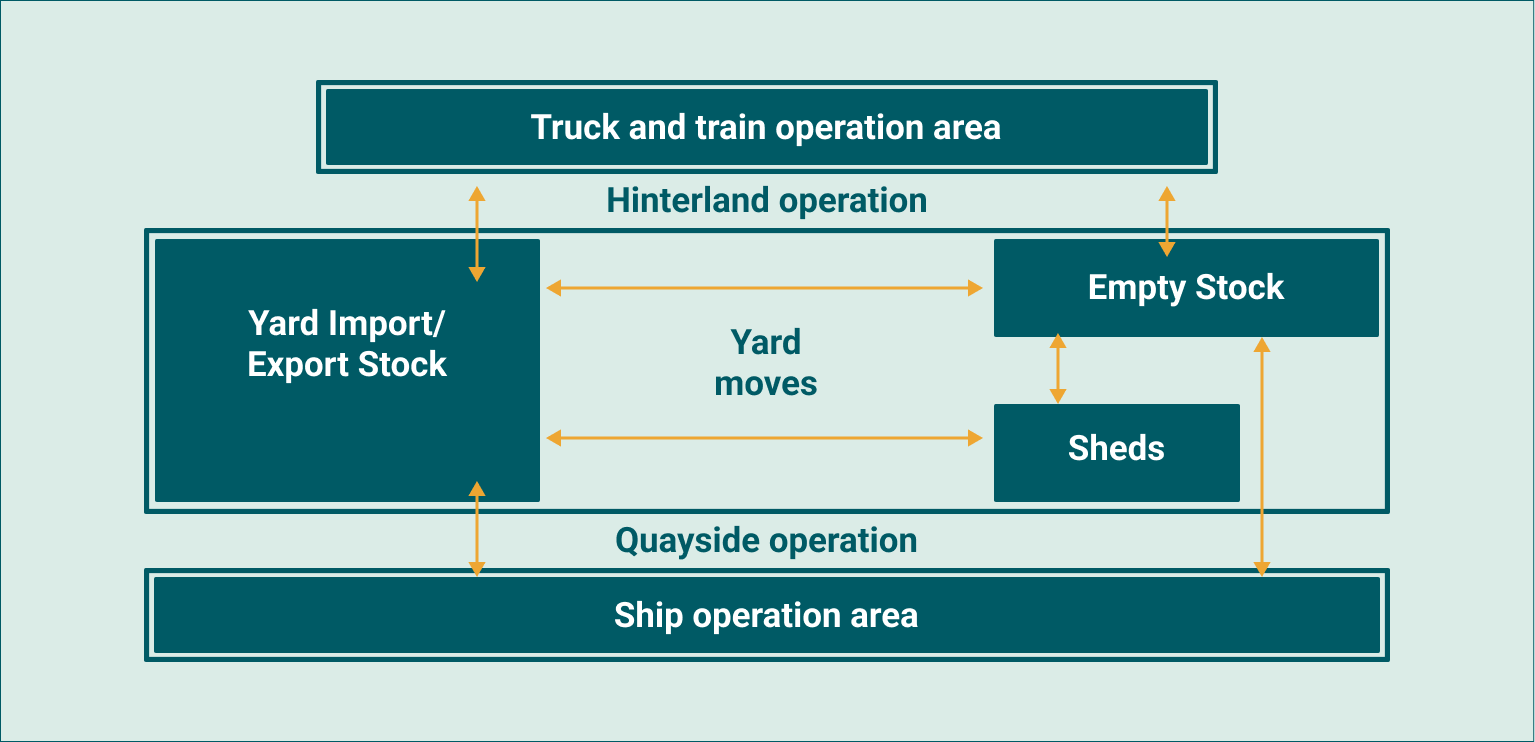
So what are the different kinds of container terminals? We refer to terminals located at sea ports as marine terminals. When transloading is between rail and road, the terminal is referred to as an inland container terminal. These are situated in or nearby major cities, and are well-connected to maritime container terminals by rail.
Hinterland terminals are those situated outside of cities. These also connect to maritime terminals, and are vital to the supply chain as a whole. Consider the many landlocked countries in Europe, for example, and their inability to trade goods with non-neighboring countries without this interconnectivity.
Let’s look at Switzerland, which has no direct access to the ocean. The only way for goods to move in and out of this country, and especially around more remote areas, is through hinterland terminals. For this kind of shipping, a barge is often used to transport containers from a maritime terminal in another country, to the hinterland terminal in Switzerland. A truck is then be used to transport the goods from the hinterland terminal to the final destination. There are various terminals along the Rhine river in the Basel area, for example, which serve this exact function.
As many European countries don’t have seaports, their economic welfare relies on having land connections to seaports in other countries. The same can be said for inland nodes the world over.
How do container terminals operate?
Upon a ship’s arrival at a port, manned quay cranes at the terminal lift containers from the ship. The quay cranes then transfer the containers to vehicles, such as AGVs (automated guided vehicles).
These vehicles travel between the ship and the container stack, where they drop off containers to be stored for a short while. After this period, the containers are taken from the stack by cranes and transported by AGVs to their next mode of transportation. This could be a barge, deep-sea ship, truck, or train.
To load export containers onto a ship, these processes are executed in reverse order. Most terminals still make use of manned equipment such as straddle carriers, cranes and multi-trailer systems. However, recently port and terminal automation has been making some exciting advances.
Port automation
This is the use of automated processes, technologies and machines to manage the movement of containers into and out of ports. Port automation includes the use of robots, self-driving vehicles and automated stacking cranes. Here are some of the benefits of port and terminal automation:
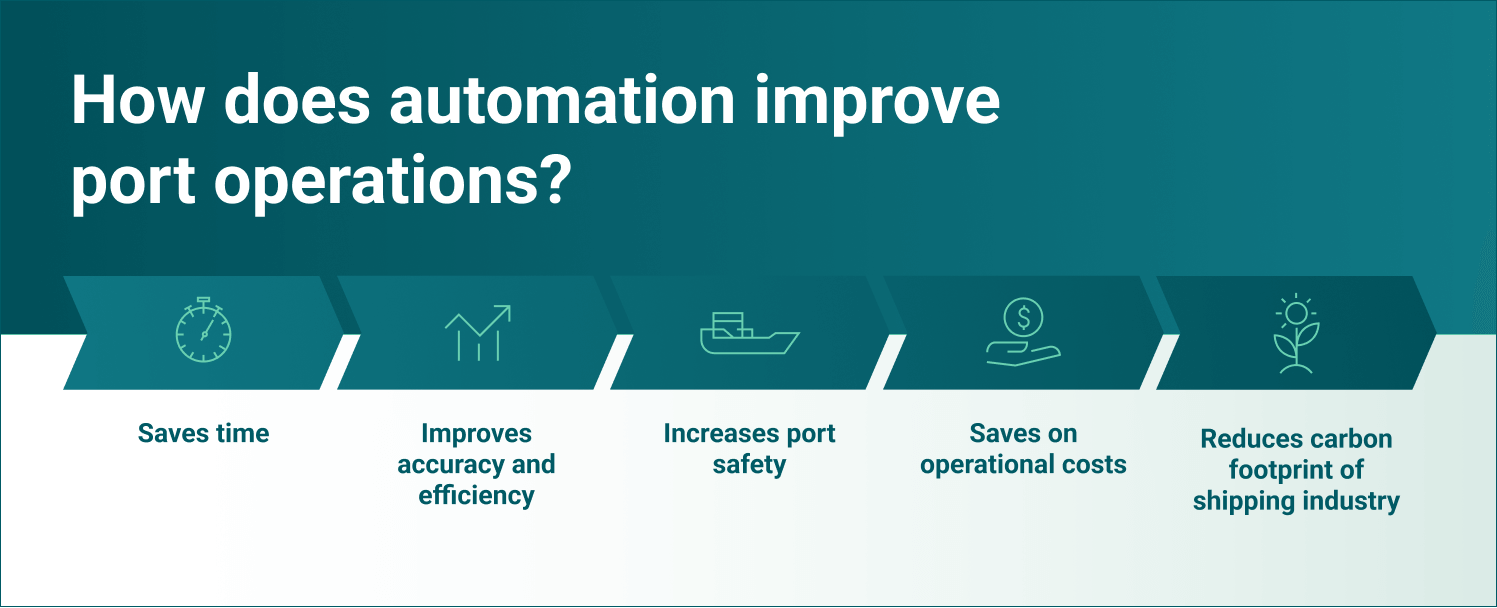
Today only about 4% of the world’s ports are automated – that’s around 53 container terminals in total. However, automation is steadily on the rise, and for good reason, it will no doubt make port operations simpler and more efficient for all involved.
Top 5 container terminal operators worldwide
Interested in who the top terminal operators are around the world? Take a look at the below list to find out more about who they are:
PSA International: 91.5 million TEUs in 2021
PSA International started operating as a global terminal operator in 1996. This is currently the world’s busiest terminal operator, with a global network of over 50 locations and 26 countries. PSA has 40,000+ staff and owns more than 60 deep sea, rail and inland terminals. They are also involved with marine services and warehouse management around the world.
COSCO SHIPPING ports limited: 122 million TEUs in 2022
This is the second busiest terminal operator in the world. A subsidiary of the Chinese shipping company COSCO, COSCO SHIPPING Ports is headquartered in Hong Kong. COSCO SHIPPING Ports covers the major port regions in China, South East Asia, Europe, the Middle East, South America and the Mediterranean region.
APM Terminals: 44 million TEUs in 2021
Headquartered in The Hague, Netherlands, APM Terminals is the third-busiest port and terminal operator around. Currently, APM has 67 terminals in their global network. In 2021, this operator carried out an impressive 12.8 million container moves.
China Merchants Group: 44 million TEUs in 2020
Founded in 1872, China Merchants Group (CMG) is an international state-owned corporation of the People’s Republic of China. CMG is a port investor, developer and operator, and has a strong presence in Hong Kong, Taiwan and Shenzhen, as well as in Southeast Asia, Africa, Europe, the Middle East, North America, South America and Oceania.
DP World: 44.3 million TEUs in 2020
This is the 5th busiest port and terminal operator, extending to over 180 countries, with an impressive team of 56,000+ employees. Based in Dubai, DP World specializes in cargo logistics, port terminal operations, maritime services and free-trade zones.
If you enjoy keeping up with the latest logistics news, container prices and industry trends, we’re about to make your day. Our monthly ‘Where are all the Containers’ report gives you the complete lowdown you’ve been searching for, all in one convenient document.
The best part? It’s completely free! Sign up and download it now, by simply clicking on the banner below. You’ll thank us later.
Types of container terminals on the basis of ownership
Now, it’s time to take a look at terminal ownership. Currently, container terminals around the world are classified into five main types:
State-run terminals
In a state-run terminal, all facilities, such as loading and unloading processes, tariff rates, and allotted checkpoints are shared equally among shipping lines. They operate on a first come, first serve basis. Regular tariffs apply for the handling of containers, or are otherwise discounted at agreed-upon rates.
Carrier-lease dedicated terminals
These terminals are the result of a collaboration between major carriers and port authorities, resulting in the signing of long-term lease agreements for exclusive use by these carriers.
The carriers are responsible for paying all costs in exchange for priority access and use of these terminals. Maersk, for example, has quite a few terminals contracted for long-term usage. On the other hand, some shipping lines have developed partnerships involving multi-user, long-term contracts. All partners involved share these dedicated terminals, as well as all costs.
Terminals built and operation terminals
Terminal operators are direct investors in the construction, operation and handling facilities of a terminal. Contracts for leasing with the port authorities are made with a deposit towards the total handling charges of container operations.
Carrier terminals
This is a type of licensing in which a carrier or several carriers lease container terminals by making advance payments to port authorities. They can also invest directly in their construction, operation, and handling services, similar to terminals built and operation terminals.
Joint venturing of carriers and terminal operators
In this case, shipping lines and terminal operators establish a company so that the terminals are jointly operated. This allows for safe, prioritized, and efficient container handling operations.
What are terminal handling charges (THCs)?
Terminal handling charges (THCs) are fees charged at terminals for the storage and positioning of containers before they’re loaded onto vessels. These charges include maintenance, equipment handling and container discharging.
THCs depend on the local costs a terminal incurs. So, depending on the port your goods arrive at, the terminal handling charges may vary considerably. It’s best to do a bit of research before shipping goods, to find out what sort of THCs you’re looking at.
Unfortunately, terminal handling charges are not something you can get around, so these need to be factored in when shipping goods almost anywhere around the world. However, there are ways to save on other port charges. Let’s learn more about this in the next section.
Port charges and how to save on them
Besides the port handling charges, there are various other charges and fees you have to consider when shipping goods. Two important charges to take into account are demurrage and detention fees. So what are these charges?
Basically, if you use carrier-owned containers (COCs), you’re given a certain number of free days. If you return the containers within the free days, you won’t pay any additional fees. However, if you don’t return the containers within the free days, demurrage and detention fees are charged by the shipping lines. These can really start to pile up.
Luckily, there are ways to avoid these unpleasant extra charges. And we’re going to tell you how. The answer lies in using shipper owned containers (SOCs) instead of carrier owned containers.
With SOC containers, you finally have flexibility and control over your boxes. Choose the exact containers you need, in the condition you need them, when you need them. You can also ship goods to any location around the world, near or far, without worrying about hefty carrier fees.
Where do I find SOCs, you might be wondering?
Container xChange is your answer. We’re a marketplace for container users and suppliers, with over 10,000 SOCs available to lease or buy. Did we mention that these SOCs are available in over 2,500 locations around the globe?
It’s so easy to get your hands on quality containers on Container xChange. Once you’re a member on our platform, navigate to our search function, select the container type you’re after, plus the location, and click ‘search’. Ta da! You’ll find an array of SOCs within your criteria.
Browse available deals all in one place, negotiate directly with container owners, and handle all payments on the platform. Click here to learn more about the benefits of SOCs on xChange.
Container terminals: Current challenges in the industry
Today, container ports and terminals face many complex challenges. Currently, around 90% of all cargo and raw materials are transported via ocean liners, putting huge pressure on ports and terminals to innovate at a rapid rate in order to keep up.
For one thing, the increasingly high cargo volumes call for bigger and better ships, as well as more streamlined processes to be put in place.
Events such as the Covid-19 pandemic have shown us just how fragile the international supply chain is. Not to mention the drastic and devastating effects on economies, businesses and livelihoods when this chain is broken. If even a single part of the chain is damaged, it has a domino effect on the entire system.
We saw this in action in 2020 when the pandemic hit China. A sudden increase in demand from Western economies lead to a one-way flow of goods from China. At the same time, demand in the other direction remained low, and disrupted container traffic. This resulted in a major container shortage, higher shipping costs, a demand for more storage space, and serious backlogs at terminals and ports around the world.
And then there’s the constant pressure to keep up with ever-changing sustainability policies and regulations as well. Ports and terminals have to adhere to certain standards when it comes to noise and light pollution, as well as upgrading port equipment to reduce harmful emissions and air pollution. All of which is time consuming to implement, not to mention costly.
Curious to learn more about why we need sustainable ports? Check out this separate blog for the complete lowdown.
Keep up-to-date with latest container logistics updates with Container xChange
Now that you know more about how crucial container terminals are, wouldn’t you like to keep up with other important industry knowledge and news on a regular basis? What if we told you you can get expert insights, market trends, and accurate container prices, all in one neatly compiled report?
We present to you ‘Where are all the Containers?’, our monthly update on all things logistics and shipping. The best part? It’s completely free to download, and only takes a minute to sign up! So what do you get in this all-in-one report?
- The latest data on average prices for 20ft, 40ft and 40ft HCs.
- Commentary on the main events happening in the logistics and supply chain industries.
- Pick up charges for 20ft, 40ft and 40ft HCs for one way moves.
- The Container Availability Index (CAx) of key ports around the world.
What are you waiting for? Simply click below, fill in your details, and get reading right away!
What’s the purpose of a container terminal?
The purpose of a container terminal is to act as an intermediary space where shipping containers can switch modes of transport between ships and trucks, trains or barges.
What are the different types of container terminals?
The different types of container terminals include break-bulk, neo bulk (for example, car terminals), and shipping container terminals.
What happens at a container terminal?
Container terminals allow for the transfer of shipping containers and cargo between ships and other modes of transport. This allows cargo to move on to its next destination. Other activities at terminals include temporary storage of containers, maintenance and repair, and sometimes consolidation and deconsolidation of cargo.



